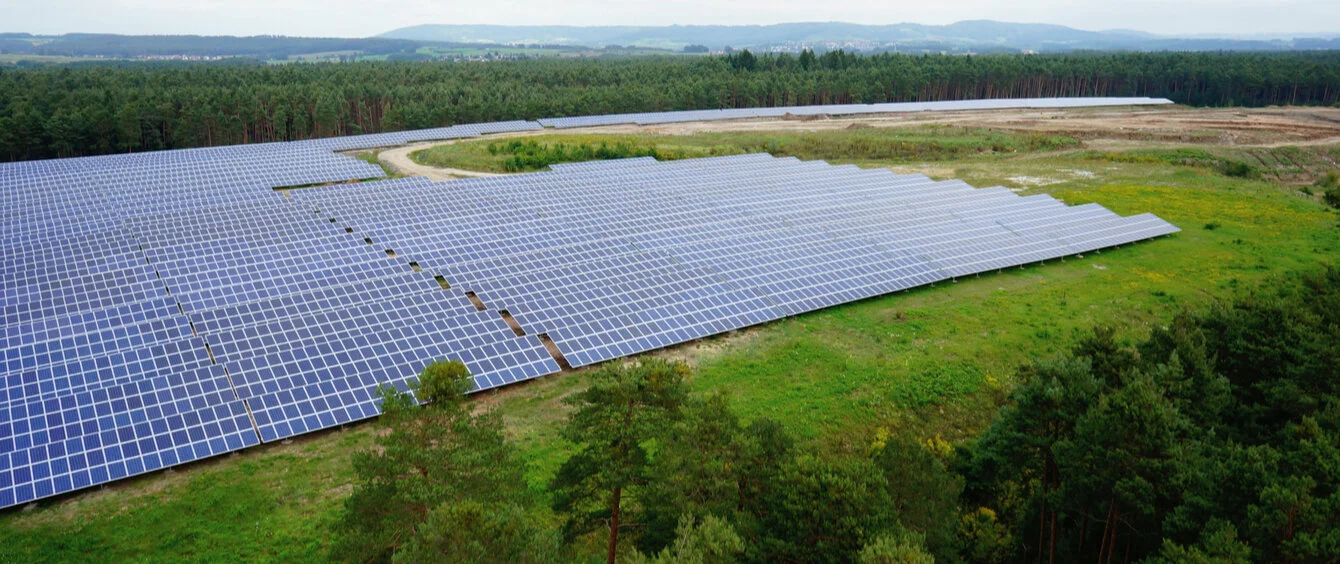
The solar industry is currently experiencing a comeback worldwide. In Germany, solar energy has achieved a commercial breakthrough. More and more projects are getting by without government subsidies. For example, the company Naturstrom wants to be the first German energy company to supply its customers from the "Solarpark Uttenreuth" in Bavaria with subsidy-free solar power.
@ Naturstrom AG
From the shade back into the light: The solar industry is currently celebrating a worldwide comeback. Experts are convinced – this is the dawning of a new era for solar energy, and there are several reasons for this trend. In Germany, the main factor is that solar energy is experiencing its commercial breakthrough. More and more projects are becoming self-sufficient and are no longer needing to rely on government subsidies thanks to more cost-effective designs. The company Naturstrom, for example, wants to be the first German energy company to supply its customers with unsubsidised solar power from a farm in Bavaria. With a capacity of around 20 megawatts, the plant in Parsberg-Eichensee is expected to supply electricity to more than 6,300 households every year from May onwards. And last year, EnBW announced that it would build Germany’s largest solar farm in Brandenburg. The 175-megawatt project is to be connected to the grid in 2021.
Climate targets are also helping to drive technological advancements. In order to achieve the figures it has set itself, Germany must proverbially step on the gas when it comes to solar expansion. According to experts at the Fraunhofer Institute, the sector will have to expand by five to 15 gigawatts annually to stay on track. However, they also note that Germany already has enough available land, without needing to rely too much on arable terrain. According to the Fraunhofer Institute, all together, this land harbours a combined potential of 226 gigawatts. Last year failed to hit its targets: By the end of December 2019, photovoltaic capacities had only grown by 3.9 gigawatts. Nonetheless, this was almost twice the expansion experienced by wind power.
Public opinion shifted
Public opinion of the technology has also shifted. Only a few years ago, solar panels sitting on top of homes were deemed ugly, with many going as far as to say they ruined aesthetics. A representative survey of 2,052 German citizens conducted by YouGov now paints a completely different picture. All in all, 80 percent of those surveyed approve of using photovoltaics on the roofs of new residential buildings. Only ten percent explicitly disapproved of panels on new buildings. As much as 82 percent are in favour of installing photovoltaic systems on all new commercial buildings, provided this is technically feasible.
The more cost-effective price tag isn’t the only reason for the solar boom. Studies show that, on average, solar farms are also much more likely to achieve their promised energy yield versus wind farms. This is important to investors. “Solar projects are the safer bet over wind farms when it comes to generating the projected amount of electricity,” emphasised rating agency Finch recently. Based on an overview of around 70 renewable energy projects across the world, the company found that 86 percent of the solar projects in question managed to hit their targets. Only seven percent of the solar farm projects reported outputs which were “significantly” lower than anticipated. The situation was quite different when it came to wind power. In almost 90 percent of the cases, the wind farms examined by Fitch did not live up to expectations. And more often than not, the results were “significantly” worse than had been forecast.
Global extension is progressing
Germany isn’t the only place where solar power is having its moment to shine – the rest of the world is also getting a piece of the action. Twice as much photovoltaic capacity was installed in the EU in 2019 than 2018. Or take Egypt, for example: The Benban solar farm, located near Aswan, is so big that it can even be seen on satellite photos taken from outer space. Sprawled over a surface area equivalent to more than 50 soccer fields, it is one of the largest such farms in the world and produces electricity for one million households. Development Minister Gerd Müller (CSU), who recently paid a visit to the plant, is certain: “Solar energy is only just in its infancy – there is so much more yet to come.” The politician sees this as the “dawning of a new era” for solar power in Africa, Asia and South America.
"We're at the beginning, not the end of using solar power." Gerd Müller (CSU), Minister of Development
In fact, immense solar farms have now not only sprung up in Morocco and Abu Dhabi, but also in China and India. This will come as no surprise. In the Middle East and North Africa, demand for electricity is on the rise, and many households are not yet connected to the grid. Unlike hydroelectric power stations, solar and wind power installations can be developed quickly, with construction work sometimes only taking a few months.
China, which together with the US and India is one of the biggest culprits when it comes to emitting greenhouse gases such as carbon dioxide, is spearheading the movement. Despite previously having virtually no solar panels at all, in the last 25 years the Middle Kingdom has grown to become the largest producer of solar technology with the most solar arrays. In 2018, it saw the most ambitious installation of solar power in the world, at 44 gigawatts, followed by India (8 GW), Japan (7 GW), Australia (5 GW) and Germany (3 GW).
Despite this positive trend, there is still plenty of room for improvement when it comes to solar power’s contribution to the energy mix. In Germany, its share of electricity generation last year was 7.4 percent. Globally, however, this figures drops to only about two percent.